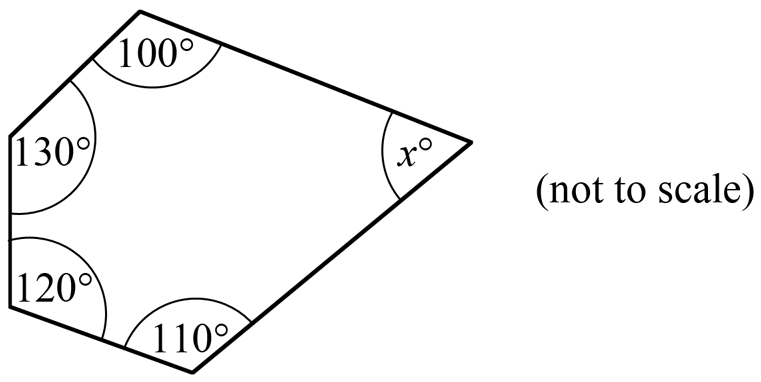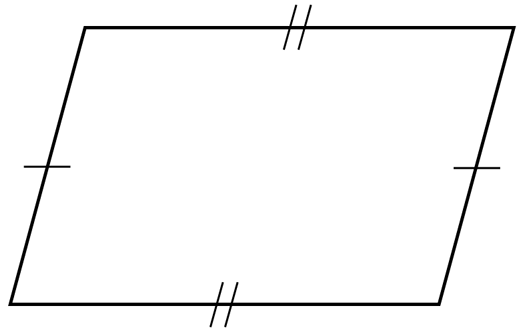Congruency, SMB-016
Special Properties, SMB-020 MC
Special Properties, SMB-019
Special Properties, SMB-018
Special Properties, SMB-017
Special Properties, SMB-016
Special Properties, SMB-015
Special Properties, SMB-014
Special Properties, SMB-012
Special Properties, SMB-013 MC
Which statement is always true?
- Scalene triangles have two angles that are equal.
- All angles in a parallelogram are equal.
- The opposite sides of a trapezium are equal in length.
- The diagonals of a rhombus are perpendicular to each other.
Special Properties, SMB-011 MC
Special Properties, SMB-010 MC
Which of these are always equal in length?
- the diagonals of a rhombus
- the diagonals of a parallelogram
- the opposite sides of a parallelogram
- the opposite sides of a trapezium
Special Properties, SMB-009 MC
Special Properties, SMB-008
Special Properties, SMB-007 MC
A closed shape has two pairs of equal adjacent sides.
What is the shape?
- rectangle
- trapezium
- kite
- triangle
Special Properties, SMB-006
Congruency, SMB-013
Which two of the triangles below are congruent? (2 marks)
Congruency, SMB-012
Which two of the triangles below are congruent? (2 marks)
Congruency, SMB-015
The two triangles below are congruent.
- Which congruency test would be used to prove the two triangles above are congruent? (1 mark)
--- 1 WORK AREA LINES (style=lined) ---
- Find the values of `a` and `b`. (2 marks)
--- 2 WORK AREA LINES (style=lined) ---
Special Properties, SMB-005 MC
`A`, `B` and `C` are vertices on the cube below.
What is the best description of `DeltaABC`?
- isosceles
- equilateral
- scalene
- right-angled
Congruence, SMB-014
Special Properties, SMB-004 MC
Which one of the following triangles is impossible to draw?
- a right angled triangle with two acute angles
- an isosceles triangle with one right angle
- a scalene triangle with three acute angles
- a right angled triangle with one obtuse angle
Special Properties, SMB-003 MC
Special Properties, SMB-002 MC
A triangle has two acute angles.
What type of angle couldn't the third angle be?
- an acute angle
- an obtuse angle
- a right-angle
- a reflex angle
Special Properties, SMB-001 MC
Which of the following triangle types is impossible to draw?
- a right-angled, scalene triangle
- a right-angled, equilateral triangle
- an obtuse-angled, isosceles triangle
- an acute-angled, scalene triangle
Congruency, SMB-011
Congruency, SMB-010
Congruency, SMB-008
In the figure below, \(ABCD\) is a parallelogram where opposite sides of the quadrilateral are equal.
Prove that a diagonal of the parallelogram produces two triangles that are congruent. (2 marks)
--- 4 WORK AREA LINES (style=lined) ---
Congruency, SMB-007
In the figure below, \(AB \parallel DE, \ AC = CE\) and the line \(AE\) intersects \(DB\) at \(C\).
Prove that this pair of triangles are congruent. (2 marks)
--- 4 WORK AREA LINES (style=lined) ---
Congruency, SMB-006
In the quadrilateral \(ABCD\), \(AB \parallel CD, \angle BAD = \angle BCD\) and \(\angle DBC = \angle BDA = 90^{\circ} \).
Prove that this pair of triangles are congruent. (2 marks)
--- 4 WORK AREA LINES (style=lined) ---
Congruency, SMB-005
In the figure below, \(BE = BC\), \(AB = BD\) and the line \(AD\) intersects \(CE\) at \(B\).
Prove that this pair of triangles are congruent. (2 marks)
--- 4 WORK AREA LINES (style=lined) ---
Congruency, SMB-004
In the circle below, centre \(O\), \(OB\) is perpendicular to chord \(AC\).
Prove that a pair of triangles in this figure are congruent. (2 marks)
--- 4 WORK AREA LINES (style=lined) ---
Congruency, SMB-003
In the figure below, the line \(AD\) intersects \(BE\) at \(C\), \(BC = CD\) and \(AC = EC\).
Prove that this pair of triangles are congruent. (2 marks)
--- 4 WORK AREA LINES (style=lined) ---
Congruency, SMB-002
The diagram shows two triangles that touch at the middle of a circle.
Prove that this pair of triangles are congruent. (2 marks)
--- 4 WORK AREA LINES (style=lined) ---
Congruency, SMB-001
The diagram shows two right-angled triangles where \(\angle BAC = \angle BDC = 90^{\circ}\), and \(AB = BD\).
Prove that this pair of triangles are congruent. (2 marks)
--- 4 WORK AREA LINES (style=lined) ---
Similarity, SMB-026
The two triangles below are similar.
Find the length of \(ED\). (3 marks)
--- 5 WORK AREA LINES (style=lined) ---
Similarity, SMB-024
Prove that the two triangles in the right cone pictured below are similar. (2 marks)
--- 4 WORK AREA LINES (style=lined) ---
Similarity, SMB-023
Show that two triangles in the figure below are similar. (2 marks)
--- 4 WORK AREA LINES (style=lined) ---
Similarity, SMB-022
Prove that this pair of triangles are similar. (2 marks)
INSERT IMAGE
--- 4 WORK AREA LINES (style=lined) ---
Similarity, SMB-021
Prove that this pair of triangles are similar. (2 marks)
--- 4 WORK AREA LINES (style=lined) ---
Similarity, SMB-020
Prove that this pair of triangles are similar. (3 marks)
--- 6 WORK AREA LINES (style=lined) ---
Similarity, SMB-019
Prove that this pair of triangles are similar. (2 marks)
--- 4 WORK AREA LINES (style=lined) ---
Similarity, SMB-018
Prove that this pair of triangles are similar. (2 marks)
--- 4 WORK AREA LINES (style=lined) ---
Similarity, SMB-017
Prove that this pair of triangles are similar. (2 marks)
--- 5 WORK AREA LINES (style=lined) ---
Congruency, SMB-009
Trigonometry, SMB-067
Find the value of \(\theta\), correct to the nearest minute. (3 marks)
Trigonometry, SMB-066
Find the value of \(\theta\), correct to the nearest degree. (2 marks)
--- 5 WORK AREA LINES (style=lined) ---
Trigonometry, SMB-065
Trigonometry, SMB-064
Trigonometry, SMB-063
Find the value of \(x\), correct to 1 decimal place. (3 marks)
Trigonometry, SMB-062
Trigonometry, SMB-061
Find the value of \(\theta\), correct to the nearest degree. (3 marks)
Trigonometry, SMB-060
Find the value of \(\alpha\), correct to the nearest degree. (2 marks)
Trigonometry, SMB-059
Find the value of \(\theta\), correct to the nearest degree. (2 marks)
Trigonometry, SMB-058
Trigonometry, SMB-057
Find \(\alpha\), to the nearest degree, such that
\(\dfrac{\sin \alpha}{8} = \dfrac{\sin 60^{\circ}}{11} \) (2 marks)
Trigonometry, SMB-056
Find \(\theta\), to the nearest degree, such that
\(\dfrac{12}{\sin \theta} = \dfrac{15}{\sin 26^{\circ}} \) (2 marks)
Trigonometry, SMB-055
Find the value of \(x\), correct to 1 decimal place. (2 marks)
Trigonometry, SMB-054
Find the value of \(x\), correct to 1 decimal place. (2 marks)
- 1
- 2
- 3
- …
- 5
- Next Page »























